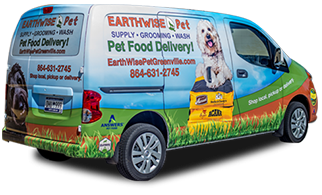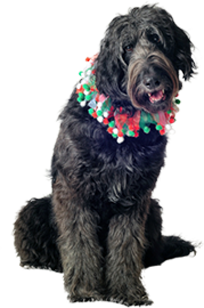recent Blog

Pet Nutrition: The Raw Diet
Aug 15 | 2020Dogs have been our BFF’s for at least 16,000 years. However, the first dry pet food “kibble” was created 64 years ago in 1956, less than a year after the original McDonald’s restaurant opened. Prior to 1956, our pets ate a much different, less “processed” diet. In fact, our recent ancestor’s diets were also quite different prior to the advent of “fast food” and convenient highly “processed” foods.
Luckily, there are a number of fresh, minimally processed commercial diets that have been developed with the assistance of veterinarians and pet nutritionists that are built upon our pet’s diets for the 15,936 years prior to the invention of “kibble.”
Pet owners who serve a raw diet universally report a number of health benefits associated with the feeding of a more “biologically appropriate” pet diet. These raw pet foods mimic your dog’s natural diet and constitutes raw meat, organs and bone with all of the amino acids, enzymes, minerals, and vitamins as nature intended. Benefits associated with raw diets include:
● Healthier skin and coats
● Cleaner teeth and healthier gums
● Higher energy levels
● Improved digestion and smaller stools
● Boost the immune system and prevent diabetes and arthritis
Our food pyramid is quite different from our dogs. Dry “kibble” pet food can contain up to 70% carbohydrates while most commercial fresh/raw diets contain no more than 20% and many less than 10%. Carbohydrates should provide 45 to 65% of our daily calorie energy vs 10 to 20% for dogs. The elimination of higher than necessary carbohydrates/starch in our pet’s food translates into many of the benefits noted above.
Cleaner teeth and healthier gums
The reason your pet’s dental health improves on a raw diet can be linked to the fact that our pet’s saliva does not contain the enzyme amylase, which is a key component of saliva that breaks down carbohydrates. Therefore, high carbohydrate dry food has a tendency to cause plaque and tartar buildup in our pets. Veterinarians estimate that over 80% of dogs show early stages of gum disease by the time they’re three years old.
Improved digestion and smaller stools
Dry kibble is only 10% moisture. When your dog eats kibble, their body has to steal moisture from its own tissues to help with digestion. This explains why many dogs drink a lot of water after eating. Raw diets are more easily digested as they contain 60 to 70% moisture and are minimally processed. In addition, dog’s stomachs have a built-in safety measure for food digestion because their stomachs are highly acidic to ensure any bacteria they consume is neutralized. Their short intestinal track moves food quicker to minimize the absorption of bacteria.
Biologically Appropriate Diet
Switching your dog to a minimally processed and properly formulated raw diet, consisting of high-quality protein, will ensure your dog is getting plenty of organic vitamins along with undisturbed essential fatty acids and active enzymes. Luckily, transitioning to a raw diet in most cases is easier due to the nature of a raw diet. We generally recommend that you feed one meal dry than the next with raw and over 3 to 6 days increase the frequency of raw meals until you are feeding all raw.
Our staff at EarthWise Pet Supply is ready to help answer all of your questions about your dog’s diet.



